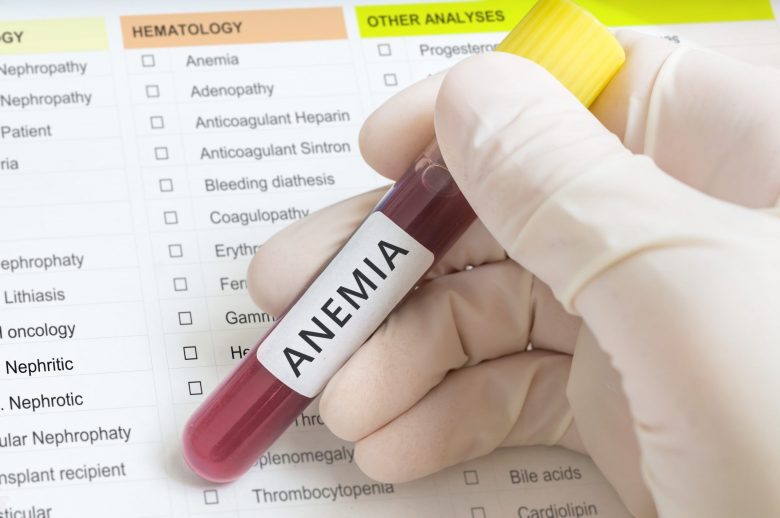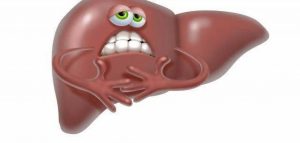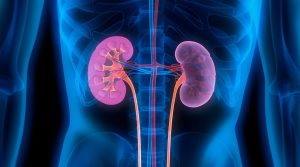Anemia is a pathological condition that is manifested by a decrease in the concentration of hemoglobin and hematocrit. In parallel, the number of erythrocytes falls. Women suffer from this problem more often. Approximately 90% of cases of anemia are associated with a lack of iron. Less often, anemia is caused by chronic diseases and other factors. Pathology can have a complex pathogenesis. Treatment for anemia is complex, requiring specialist supervision. Without the timely intervention of a doctor, anemia can progress to a serious condition, leading to loss of consciousness, lack of reflexes in the limbs.
Anemia symptoms (signs)
The clinical picture in pathology largely depends on the degree of decrease in hemoglobin. General characteristic manifestations of anemia:
dizziness;
constant weakness;
pallor of the skin, often with moderate yellowness;
noise in ears;
tingling sensation in the hands and feet;
cardiopalmus;
tendency to faint.
Patients experience some changes in behavior: the desire to eat chalk, to inhale previously unpleasant odors. Elderly people with coronary artery disease report more frequent attacks of angina pectoris, even after light exercise.
At the initial stage of development, anemia proceeds without clinical signs. Its moderate degree is characterized by a reduced concentration of attention, general malaise, pallor of the mucous membranes, nails. If the anemia continues to develop, the symptoms become more severe. Among them:
arrhythmia;
shortness of breath in the absence of heavy exertion;
headache;
poor sleep;
frequent colds;
thinning nails;
decreased appetite.
Then comes the anemic precoma. She is characterized by:
shortness of breath even without light exertion;
cyanosis of the skin and mucous membranes;
extreme sleepiness;
mental changes, for example, depression, hallucinations.
Anemia in its most severe manifestation leads to low blood pressure, vomiting, and frequent shallow breathing. Along with this, the patient loses consciousness, he has involuntary urination. Another symptom of the 5th stage of anemia is the absence of reflexes; in this case, treatment becomes more complicated. The patient does not respond to stimulation, for example, on a neurological examination.
Causes
The pathological condition can be caused by acute blood loss. The next factor is a violation of the production of red blood cells. The consequence of this process is anemia:
aplastic;
megaloblastic;
iron deficiency;
sideroblastic;
chronic diseases.
The third factor is active destruction of red blood cells. Against its background, hemolytic anemias are noted.
Anemia is often diagnosed, which is associated with an insufficient amount of iron. Immediately after birth, a lack of this element is observed in children:
premature, low weight;
born to women with a similar diagnosis;
from multiple pregnancies;
mothers who suffered from bleeding in the last trimester of pregnancy or during childbirth.
An insufficient amount of iron is associated with nutritional factors. Among them:
the use of exclusively herbal products;
a poor diet with excessive amounts of carbohydrates and fats;
pathologies of the gastrointestinal tract that impede absorption;
disorders of iron transport.
Anemia often develops against the background of oncological lesions of the stomach, chronic pancreatitis. Progression of anemia is possible due to the removal of part of the intestines, stomach. A certain danger is posed by:
cystic fibrosis;
celiac disease;
enteropathy.
There is a risk of anemia on the background of parasitic damage to the body, strong helminthic invasions. Anemia of varying severity is associated with blood loss. They occur in both external and internal environments.
Which doctor should I go to?
Treatment of the diagnosis of anemia directly takes into account the symptoms of the unhealthy condition, as well as the level of hemoglobin. Since the clinical signs of anemia are not always identical to the severity of anemia according to laboratory criteria, it is imperative that an experienced physician be involved in determining the most effective and safest therapeutic regimen. He is engaged in the diagnosis and treatment of such patients:
HEMATOLOGIST
At the initial appointment, the doctor asks the patient in detail about the peculiarities of work, life, and the presence of chronic pathologies. It is important for the doctor to know:
how long ago the first signs of anemia appeared;
whether close relatives have anemia;
whether the patient is on a diet, what is his diet;
whether there were surgical interventions in the gastrointestinal tract;
whether the patient is taking any medications.
Since anemia has various causes, it is important to identify the main factor leading to anemia. The forthcoming therapy largely depends on its specificity.
Treatment methods
Each type of anemia dictates the appointment of specific pharmacological agents. Iron deficiency anemia suggests:
elimination of the factor;
dietary food with optimal iron inclusion;
long-term intake of Fe preparations;
transfusion of erythrocyte mass;
the use of parenteral drugs if indicated.
B12-deficiency anemia is effectively controlled by diet. Substitution therapy may be needed. The same principle is shown for folate deficiency anemia. If anemia has developed against the background of chronic diseases, then the patient needs to:
get rid of the underlying pathology;
take a course of recombinant erythropoietin;
make up for the lack of folic acid.
Acquired hemolytic anemia https://en.wikipedia.org/wiki/Anemia requires glucocorticosteroids. If the result is insufficient, splenectomy is performed. After removing the spleen, immunosuppressants, anti-lymphocyte globulin are needed. According to indications, plasmapheresis is prescribed.
In each of the above cases, it is necessary to exclude physical and emotional stress. It is important to fully rest and eat according to the doctor’s recommendations.



